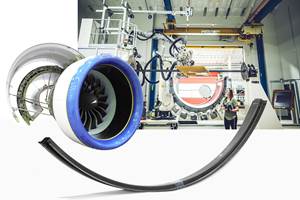In memorium: Bill Benjamin
HPC editor-in-chief Jeff Sloan looks at the contribution and the legacy of a composites industry icon, Bill Benjamin.
In our daily haste to progress and advance the technologies that shape the composites industry, it’s easy to get caught up in the constant quest to look ahead. In doing so we forget, on occasion, to look behind at the history that has shaped this industry — both in large and small measure. Indeed, is vitally important to take time to study and appreciate where we’ve been and the forces that have led us to this point. Those forces often are people. And in the relatively small composites community, such people are not only abundant, but very often familiar to many of us as well.
So, when industry icons pass, it’s appropriate that we take a moment to appreciate who they were and what they meant to composites. Such a passing occurred on Feb. 14 as HPC was going to press; we got word that day that composites industry veteran Bill Benjamin had passed away following several years of declining health.
William P. Benjamin was well known to many in the composites industry as a champion for new materials and processes during his nearly 50-year career. The author of several books, Bill held a patent on induction welding of thermoplastic composites, and he served as an advisor to several colleges and universities.
In 1978, The Boeing Co. recognized the need to automate its composites processing if composites were ever to become cost-effective. Bill was selected to head Boeing’s first Composites Automation Group, and was successful in attracting, in his words, “a dynamic team, with some of the best creative minds I’ve ever encountered.” That group subsequently posted many “firsts,” including the development and implementation of contour tape layup, originating the concept of fiber placement, developing pultrusion technology for epoxy prepreg systems, and conceiving and developing an automated channel-forming machine.
Bill went on to establish Composites Market Reports, an in-depth newsletter and intelligence report for the industry that became a must-read for anyone involved in aerospace composites. Benjamin also was a contributor to High-Performance Composites magazine over the years.
While we mourn the passing of Bill and appreciate his contributions, it should be noted that his legacy persists: Chris Red, his stepson, who took up the Composites Market Reports mantle as Bill’s health declined, has become, in his own right, a vital contributor to the composites industry as a market researcher and industry analyst.
As the composites industry continues to mature, it’s certain that we will see the passing of others who, like Bill Benjamin, have attained well-deserved stature. As a publication of record for composites, we here at HPC believe it’s vital that we take the time to remember the men and women who have given so much of their time, money, effort and intellect to propel this community to this point.
I’d like to encourage you to help us recognize such contributions before those who make them are no longer with us. Please alert any of us here at HPC to any milestones important to your company or organization. This includes achievements, accomplishments, discoveries and breakthroughs of all kinds, whether done by an individual or a group. You can be a vital part of helping make sure the entire industry recognizes and appreciates the role that we all play. If you want to get in touch, the best way to communicate with the HPC staff is via e-mail at pr@compositesworld.com, or you can contact me directly at jeff@compositesworld.com.
Related Content
First Airbus A350 crash confirmed in Haneda
Shortly after touch-down, a JAL A350-900 aircraft recently collided with a De Havilland Canada Dash 8. Exact circumstances are still unknown.
Read MoreLow-cost, efficient CFRP anisogrid lattice structures
CIRA uses patented parallel winding, dry fiber, silicone tooling and resin infusion to cut labor for lightweight, heavily loaded space applications.
Read MoreWelding is not bonding
Discussion of the issues in our understanding of thermoplastic composite welded structures and certification of the latest materials and welding technologies for future airframes.
Read MoreThe potential for thermoplastic composite nacelles
Collins Aerospace draws on global team, decades of experience to demonstrate large, curved AFP and welded structures for the next generation of aircraft.
Read MoreRead Next
Scaling up, optimizing the flax fiber composite camper
Greenlander’s Sherpa RV cab, which is largely constructed from flax fiber/bio-epoxy sandwich panels, nears commercial production readiness and next-generation scale-up.
Read MoreCeramic matrix composites: Faster, cheaper, higher temperature
New players proliferate, increasing CMC materials and manufacturing capacity, novel processes and automation to meet demand for higher part volumes and performance.
Read MoreUltrasonic welding for in-space manufacturing of CFRTP
Agile Ultrasonics and NASA trial robotic-compatible carbon fiber-reinforced thermoplastic ultrasonic welding technology for space structures.
Read More












